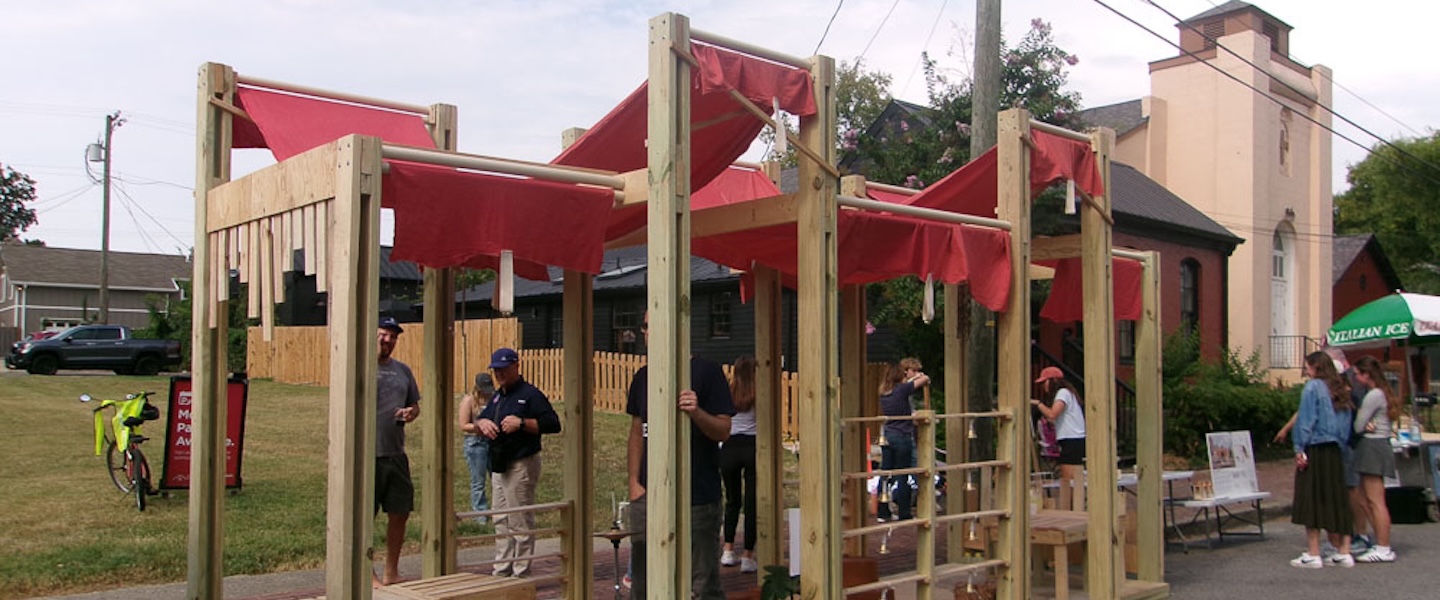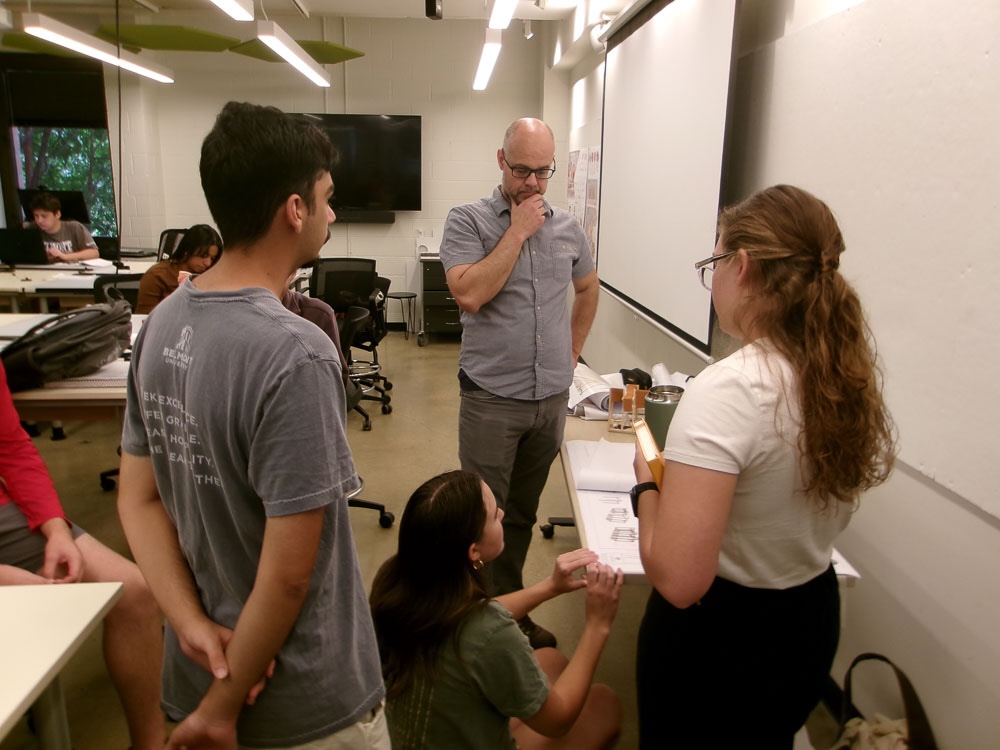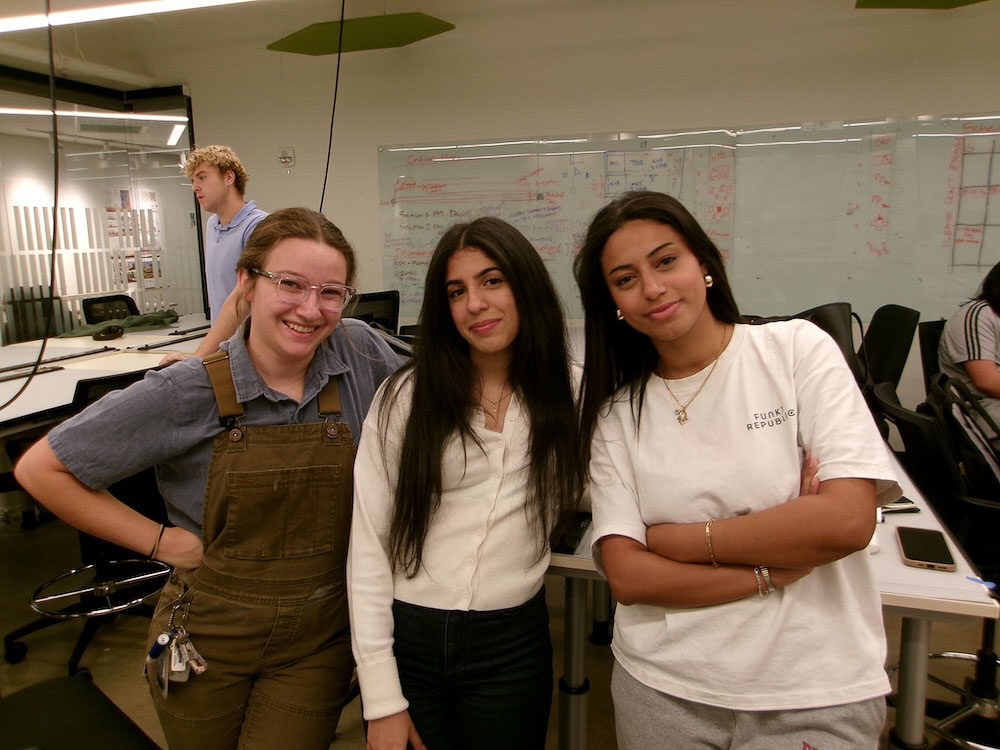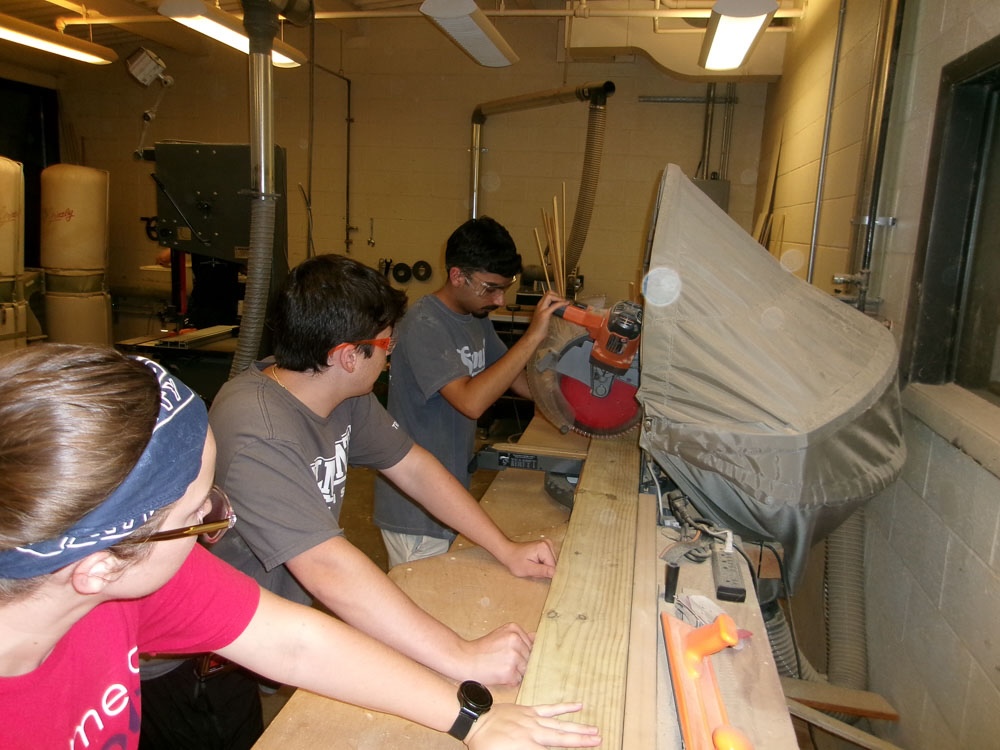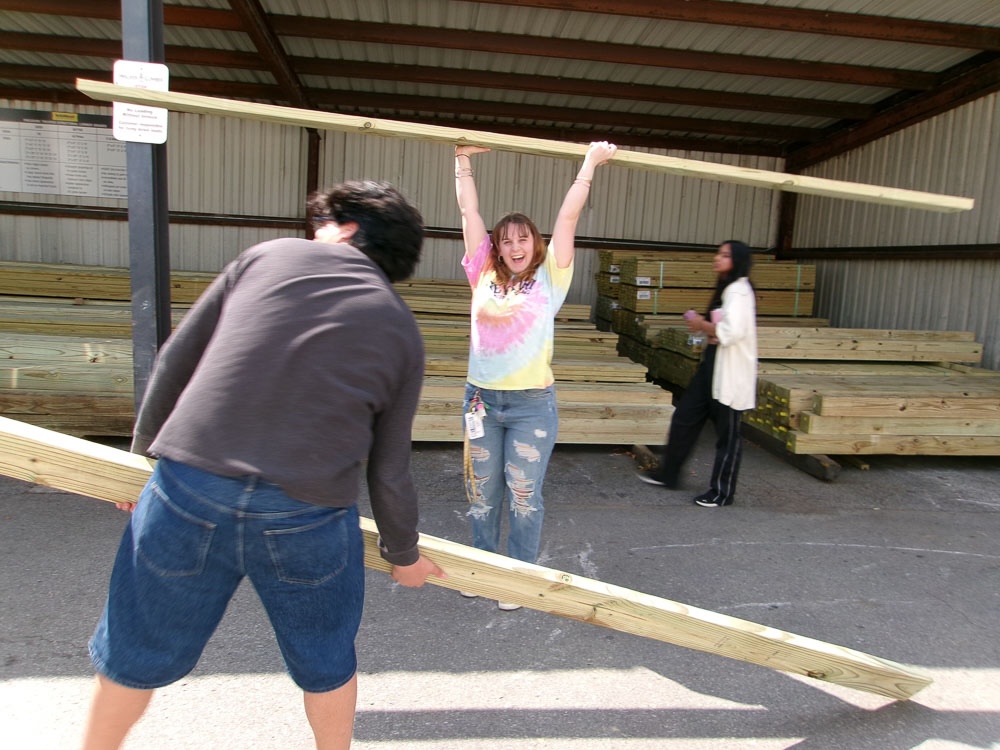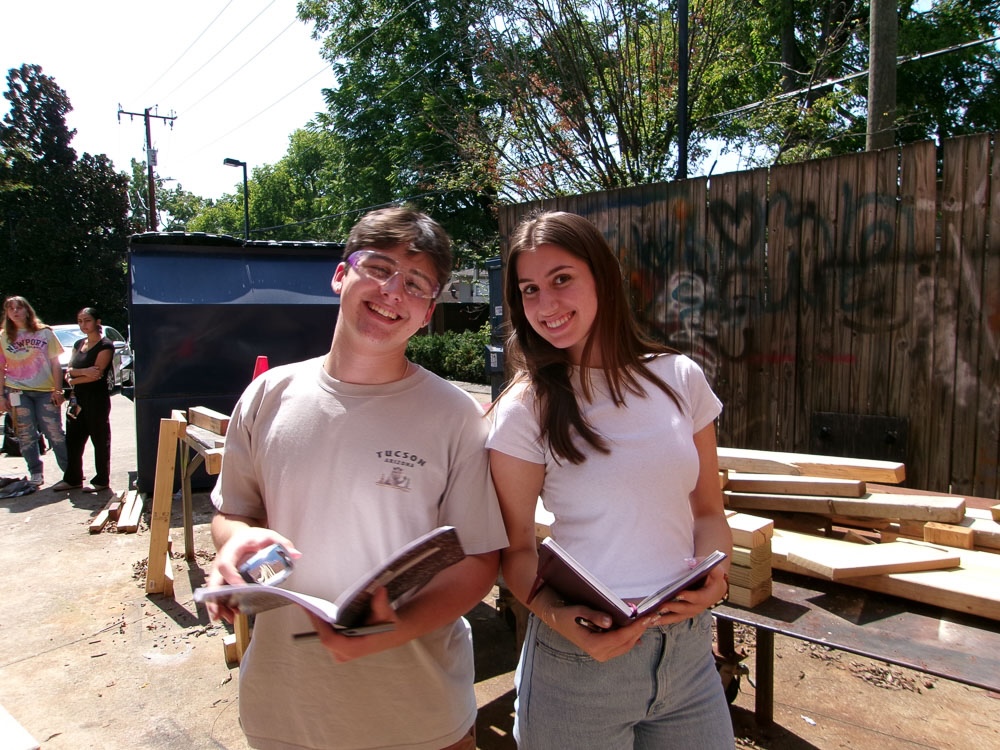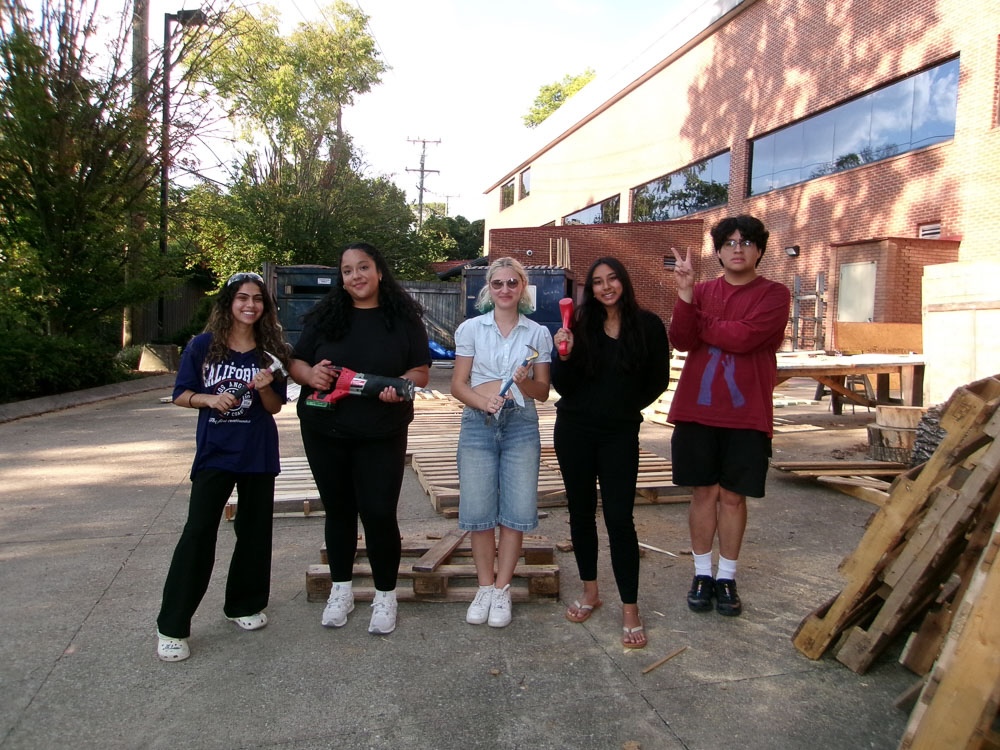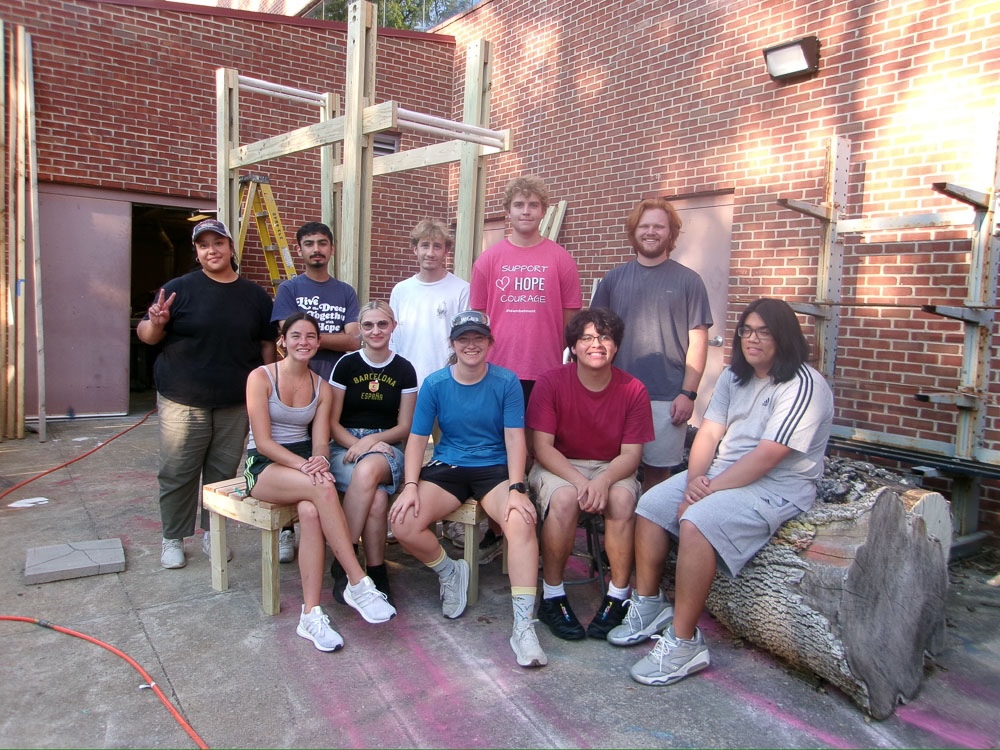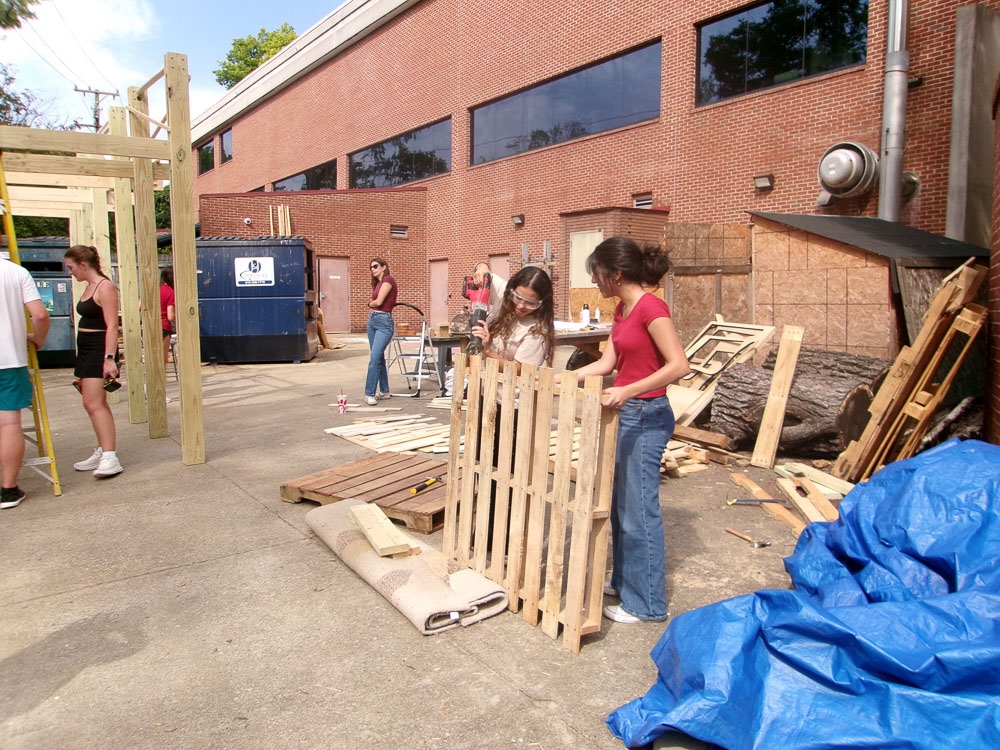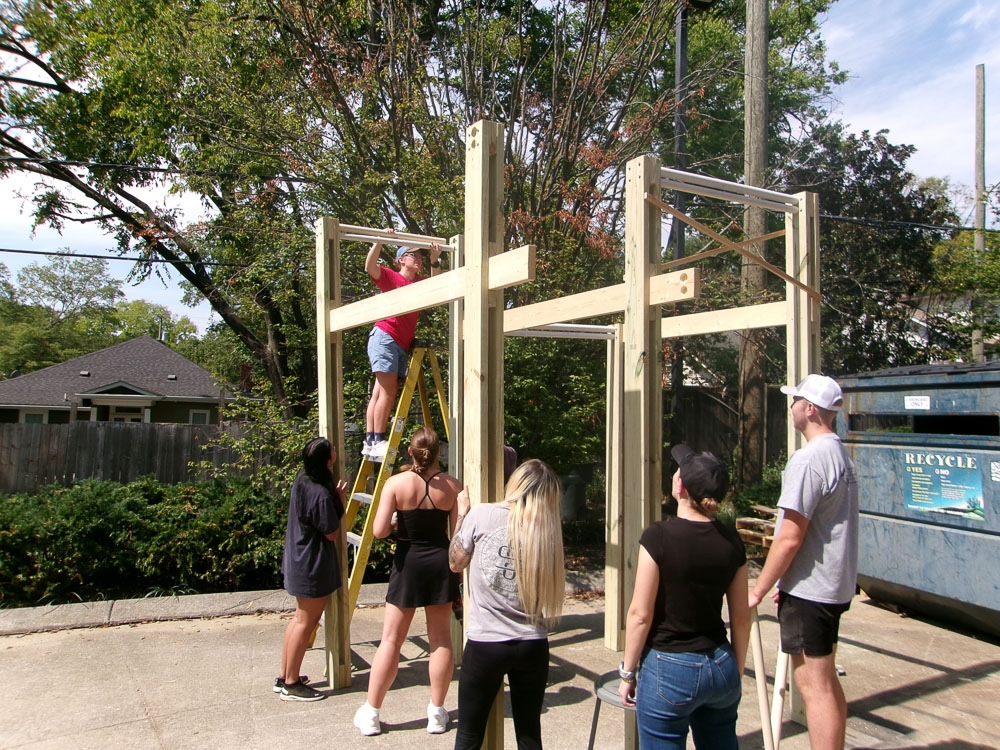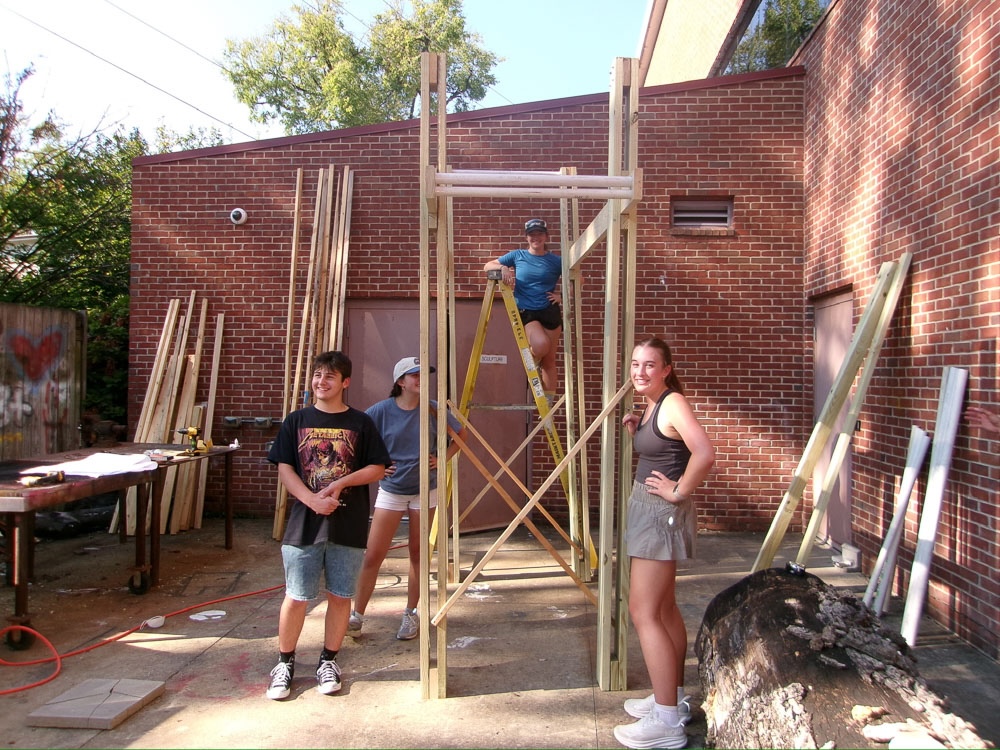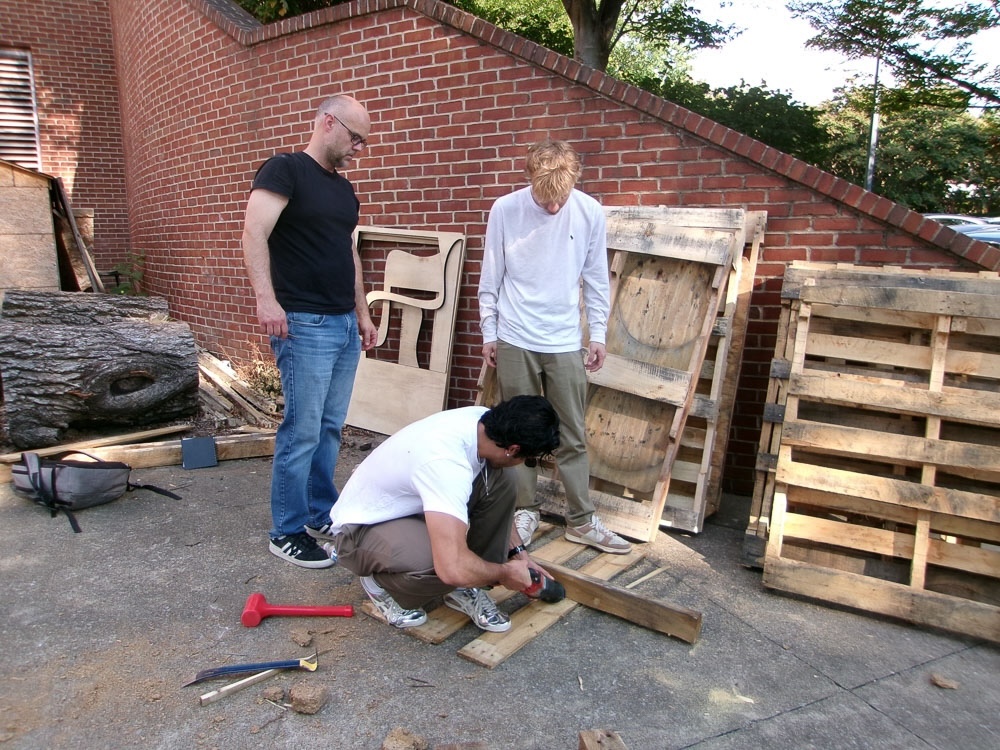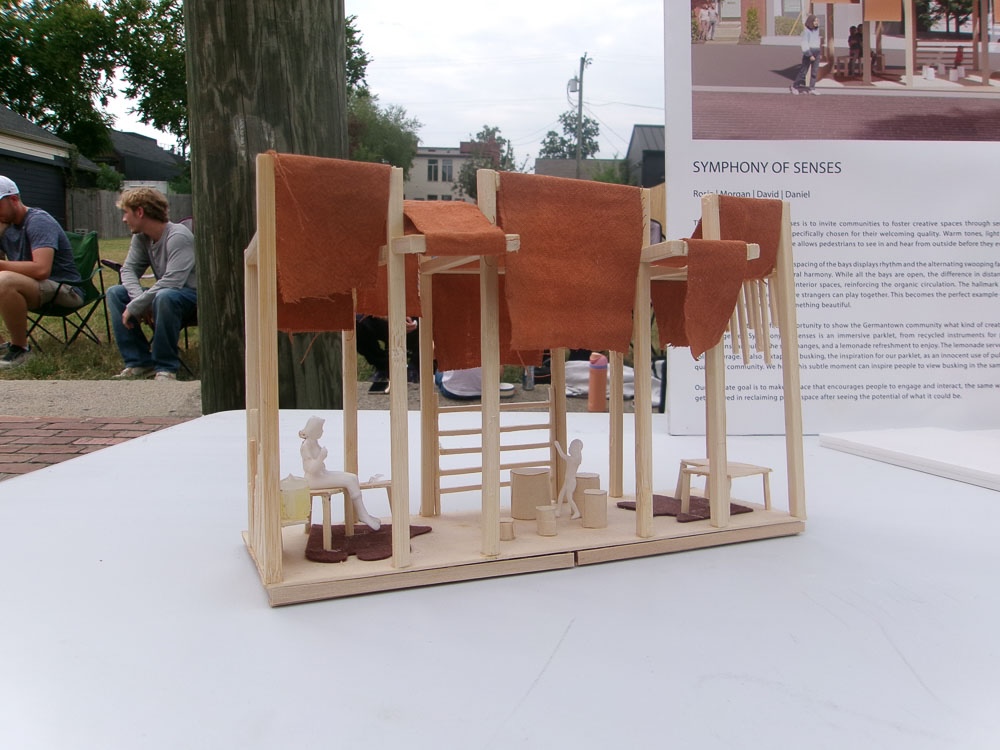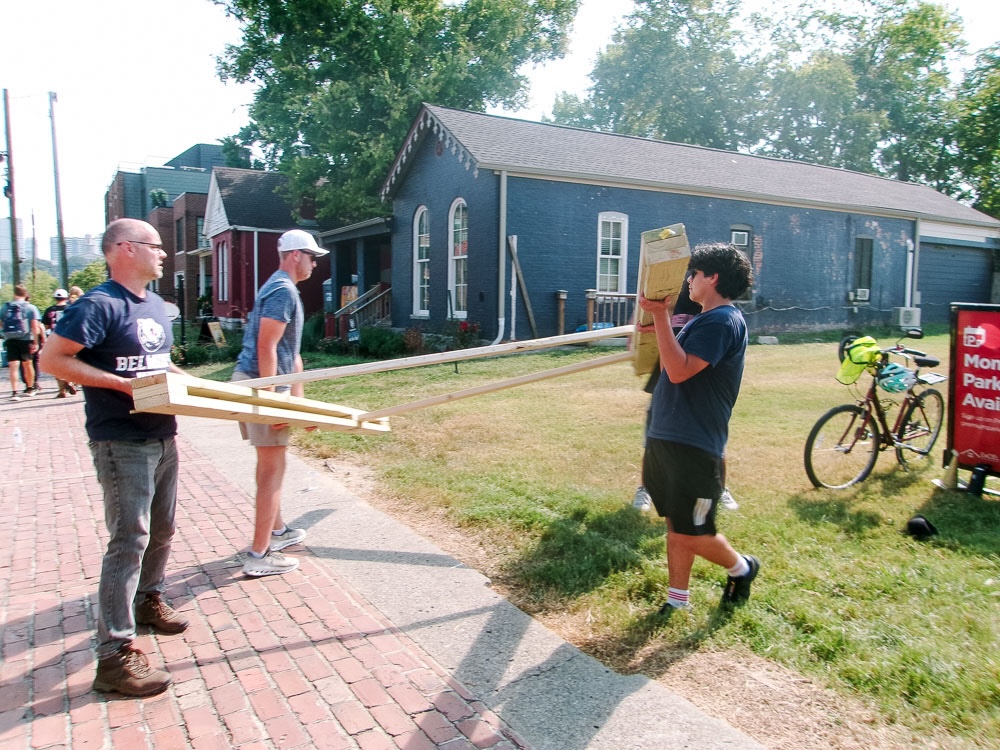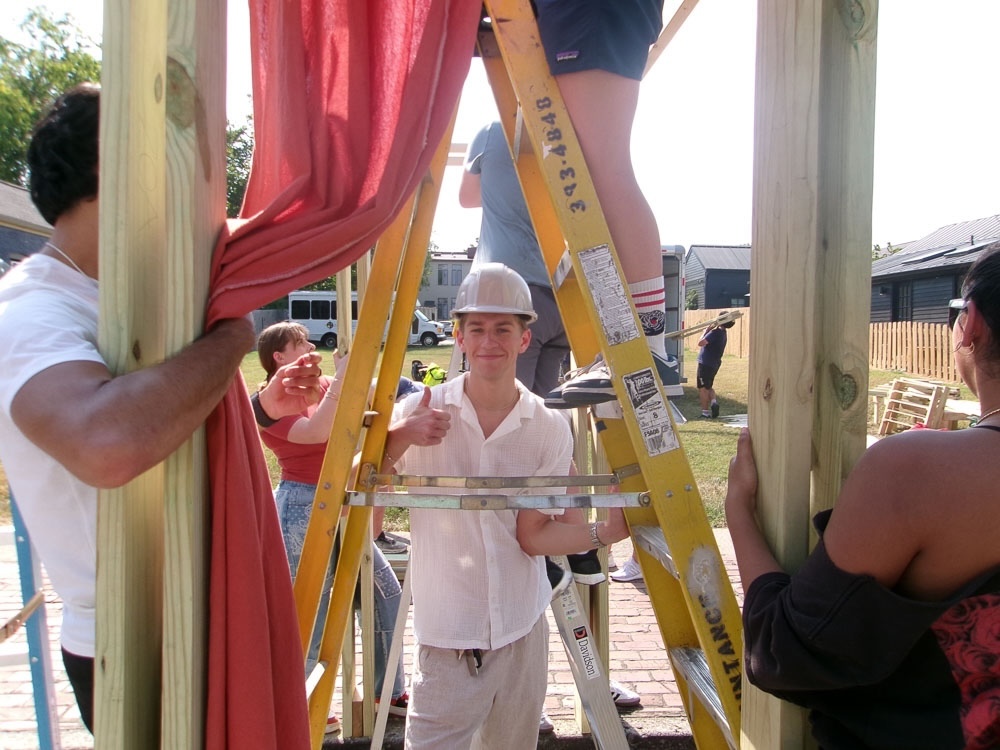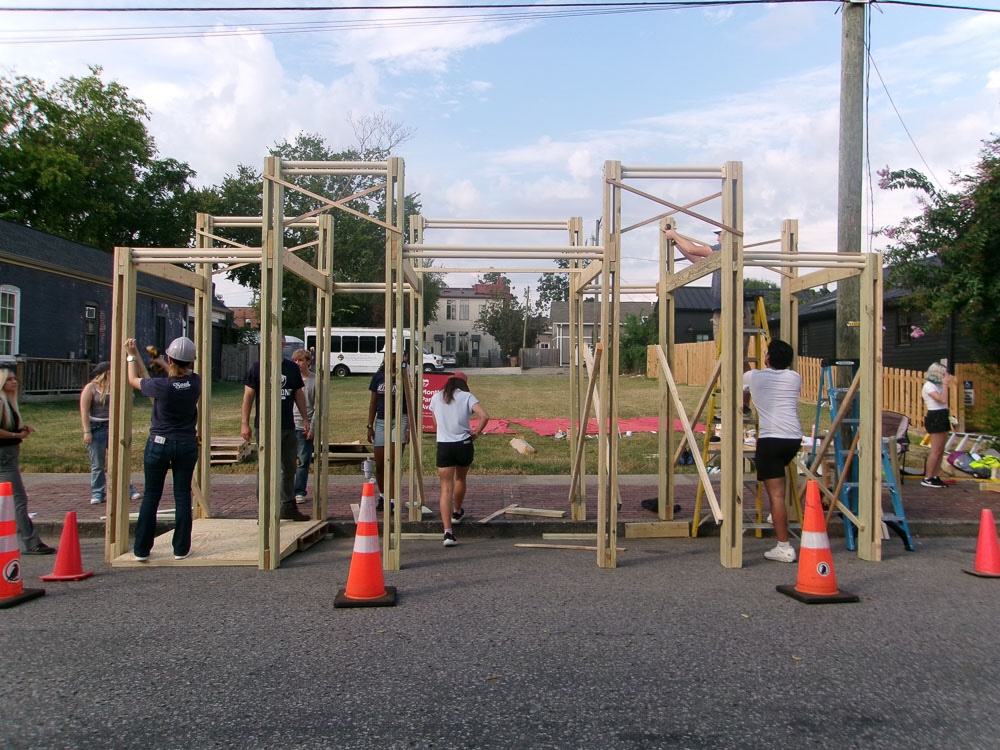O’More Architecture students’ "Symphony of the Senses" transformed a Germantown street into a playful, sensory-rich community gathering space
Across Nashville, ordinary parking spaces became miniature parks, gathering places and works of art, Sept. 21, during [PARK]ing Day, a global design event led locally by the Civic Design Center. For Belmont’s O’More College of Architecture & Design, the day capped off an intense few weeks of studio work in which third-year students learned what it means to design for play, sustainability and community connection in the heart of Germantown.
Led by professors Dr. Barry Ballinger, Thomas Lowing and Layla Iskandar, six student teams in Architecture Studio 3 visited the Germantown site, studied the neighborhood’s character and responded to this year’s theme of “play.” The challenge was steep: design a temporary parklet on a limited budget, revise the concept after critique in just five days and ensure the final design was fun, functional, recyclable and unique to the neighborhood context.
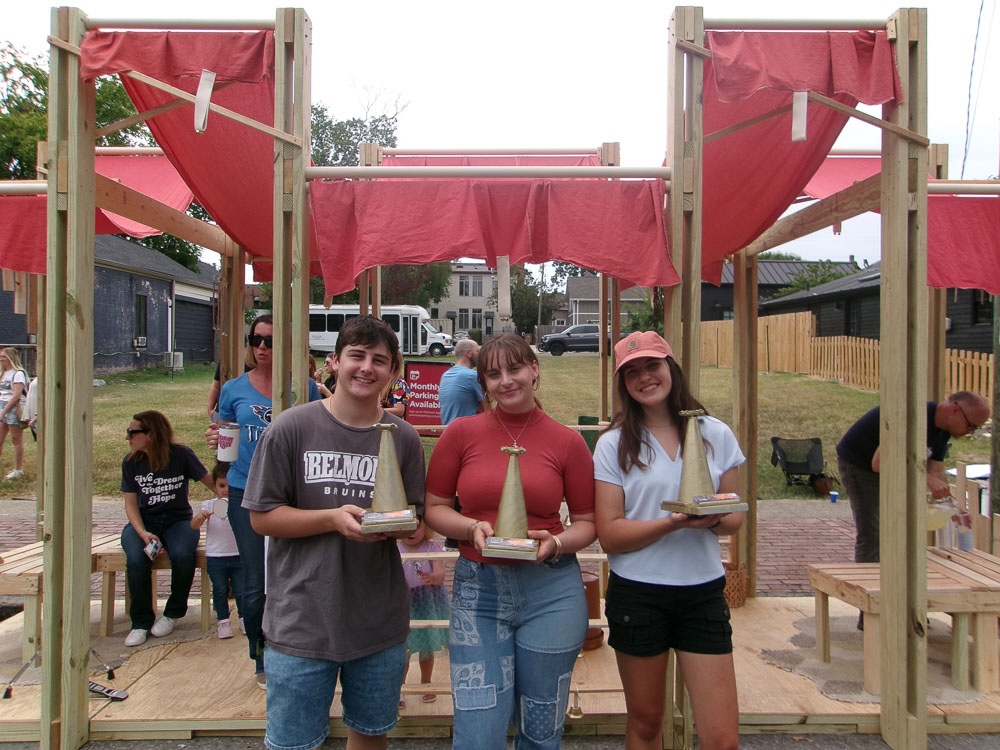
Symphony of the Senses
Out of the six designs, "Symphony of the Senses" was selected by Civic Design Center judges for its thoughtful approach to community engagement. The parklet was designed to be permeable from both sidewalk and street, included an adaptable shade structure and incorporated all five senses: a scent diffuser for smell, fresh lemonade for taste, interactive musical instruments for sound and touch and a striking architectural form that invited people to look closer.
For Rosie Hoover, part of the original design team and later a member of the documentation group, the compressed timeline brought lessons that no classroom exercise could replicate.
“We only had two weeks from the competition to the day of construction,” she said. “It was hectic, but we learned so much about collaboration, structural integrity and comprehensive design.”
Hoover remembered the moment when the structure first began to take shape as the most rewarding. “We got to see the vision we put so much work into designing come to life. I’m especially proud of how we pushed and pulled the dimensions to emulate rhythm — it made the design both economical and fun.”
Behind the Scenes
Lessons in Building and Leadership
The rapid pace of the project also called for strong leadership in construction. Graham Russell, who served as construction manager, drew on her background in theatrical scenic design to guide the build.
“In the beginning, the task felt really daunting,” she admitted. “There were a lot of contingencies and logistics to sort out, alongside teaching construction techniques to my cohort-mates. But once we got the first bay up, we gained the confidence to pull it off.”
In the days leading up to the event, Russell organized a full practice run of assembly and disassembly, which paid off on the big day. “Few feelings compare to sitting in a well-designed and crafted structure with the friends with whom you built it,” she said.
Build Out
Day-of Impact
On Sept. 21, the students’ work came to life along 6th Avenue North. Visitors gathered under the shade structure, sampled lemonade and tried their hand at the musical instruments woven into the design. Children, in particular, were reluctant to leave the space, underscoring the project’s success.
For Ballinger, the experience offered more than design practice — it challenged students to rethink how streets are used. “There’s nothing written in nature that says streets must be exclusively for moving and storing cars,” he explained. “Streets are public space, and events like [PARK]ing Day help us imagine new ways to use them.”
Set Up
Community Partnership
Veronica Foster, community development director at the Civic Design Center, praised the team’s achievement:
“Parklets are already a unique design challenge since you need to address a functional public amenity within the size of a parking space, and the Belmont O'More students took the challenge in stride. They not only came up with a parklet design that was playful and engaging for a pop-up activation, but they built a beautiful, architectural structure that no one wanted to see packed up in the U-haul and taken away. They are learning about essential design principles for the public realm and actually applying them to life-size projects — I think the students should feel proud.”
The partnership between Belmont and the Civic Design Center continues to open doors for students to test their skills in the public realm. Several alumni have built connections through [PARK]ing Day that led to professional opportunities, further illustrating the value of this annual collaboration.
Learn more about this year's projects on the Civic Design Center's blog.
Looking Ahead
For Ballinger, the experience underscored Belmont’s mission to form architects who are also advocates. “Architects have an ethical and legal mandate to protect the health, safety and welfare of the public,” he said. “We need architects who will actively shape built environments that are sustainable, safe and inspiring — and that’s exactly what projects like this prepare our students to do.”
Learn More
See Details about Belmont's Architecture Program

